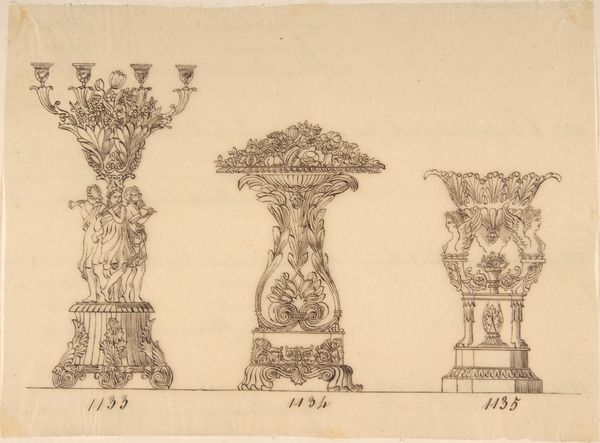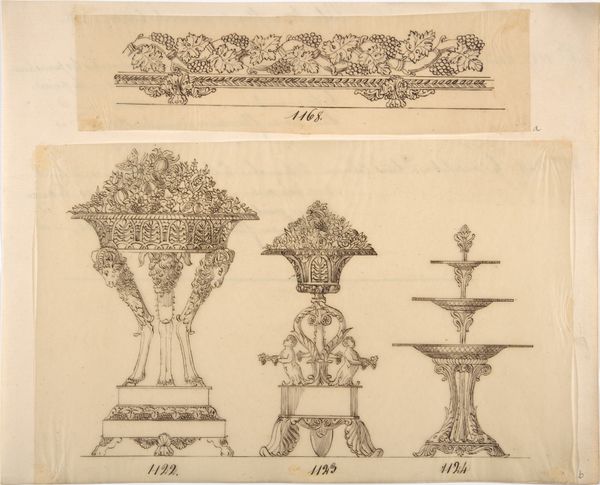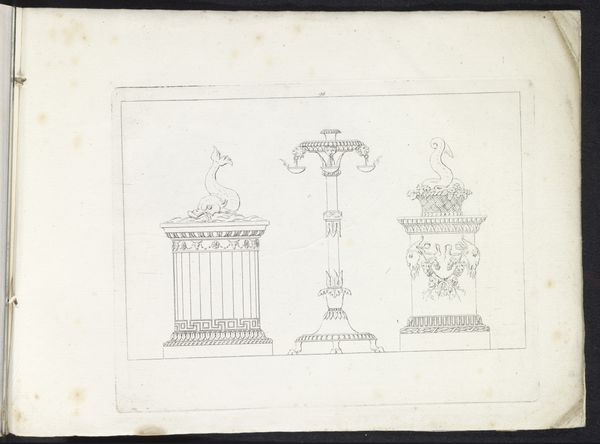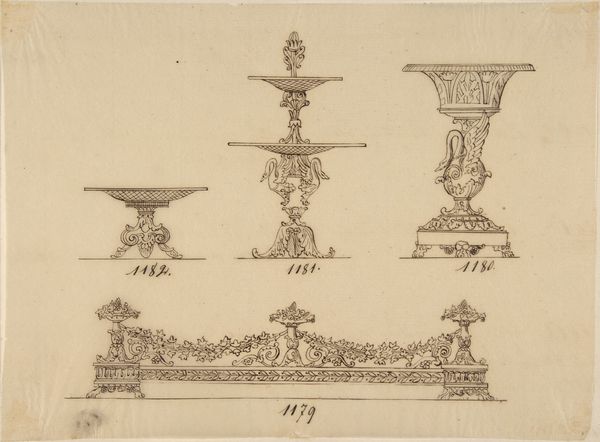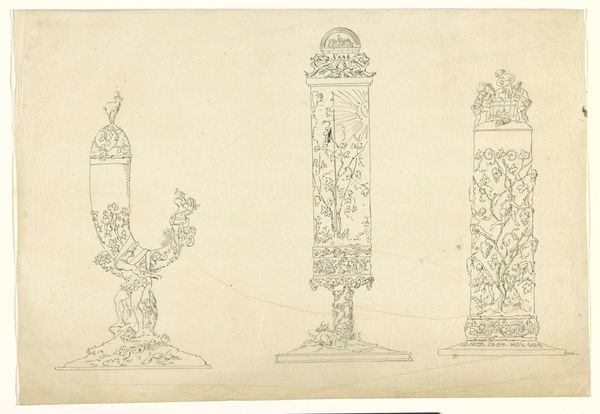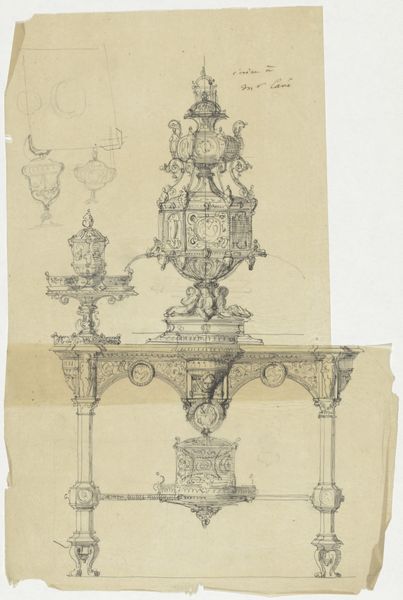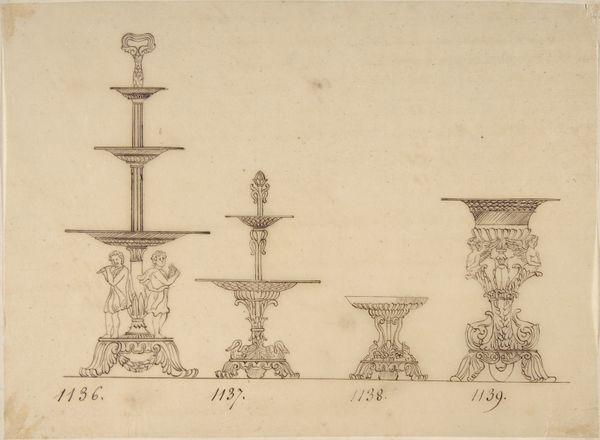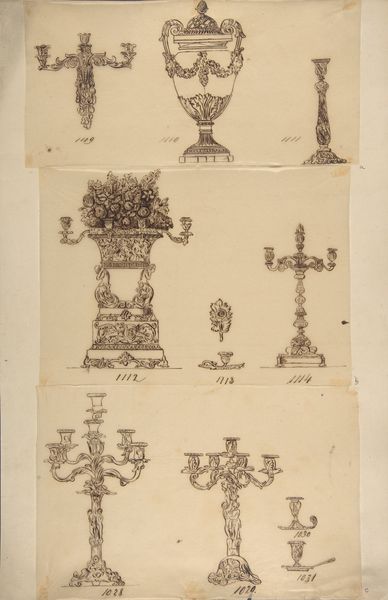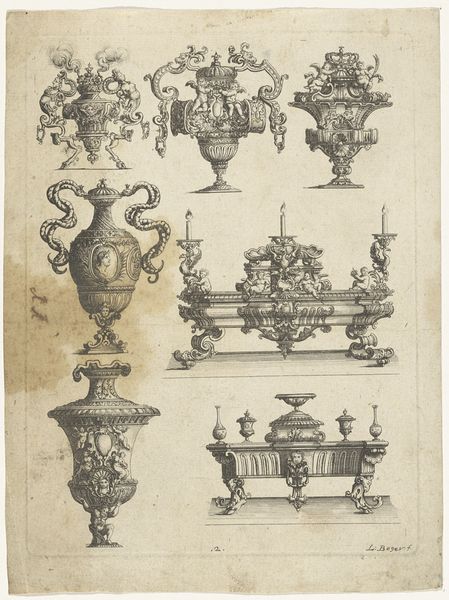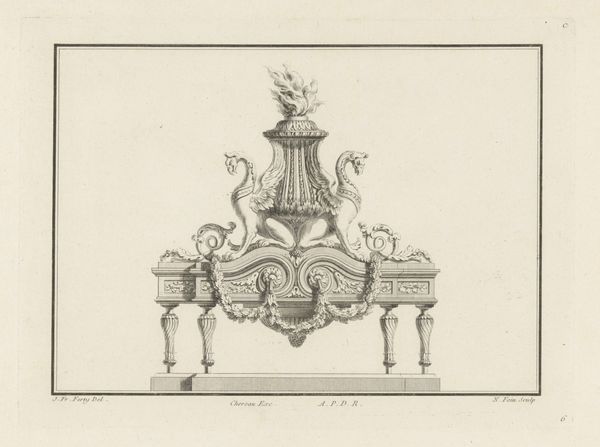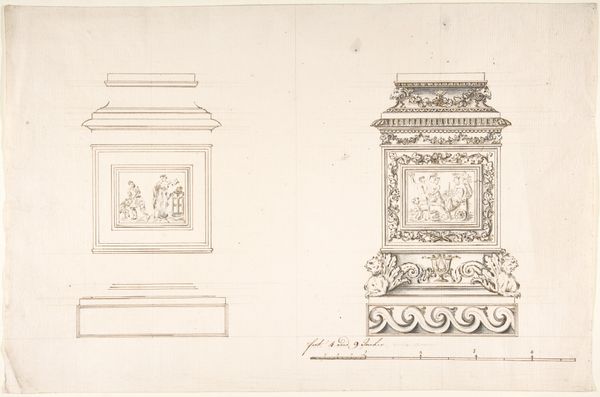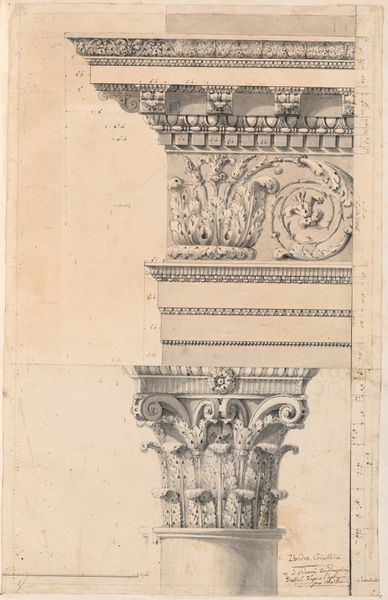
drawing, print, pencil, engraving
#
drawing
#
neoclacissism
# print
#
pen sketch
#
pencil sketch
#
figuration
#
form
#
pencil
#
line
#
decorative-art
#
engraving
Dimensions: a: 7 1/2 x 6 3/8 in. (19 x 16.2 cm) b: 7 1/2 x 4 7/16 in. (19 x 11.3 cm)
Copyright: Public Domain
Curator: Let's consider this intriguing print titled "Designs for Two Candelabras and Two Urns" from the 19th century, currently residing here at the Metropolitan Museum of Art. Editor: My first impression is that the objects feel impossibly ornate, over-the-top, as if intended for a stage rather than a table. Curator: It embodies the Neoclassical movement's interest in revisiting antiquity. The emphasis on line and form, combined with the figuration in these decorative objects, fits within the revival of classical aesthetics that permeated 19th-century design. Editor: Definitely. And all that intricate detail points to the skill involved in production. Someone dedicated a lot of time to designing these things. Were these actually produced? And if so, by whom? I want to know about the artisans and their working conditions, the foundries, and the types of labor involved in making luxury items like this accessible to a specific class. Curator: That's a crucial point. These designs probably reflect the rise of industrial production alongside traditional craft. While some might have been crafted by individual artisans, the drawings may also speak to aspirations of larger scale workshop production in the nineteenth century. These types of images would circulate among those interested in the trade, thus disseminating design ideals. Editor: The engraving method allows for easy reproduction. A way for these ideas to disseminate to broader audiences, to stimulate taste, desire and even social aspiration? I imagine a whole system of apprentices involved in such detailed engraving? Curator: Absolutely. This print serves as a kind of archive itself. Each line tells a story about societal values and artistic ambition during that era. How decorative objects reinforced ideas about wealth, class, and taste. Editor: And of how aesthetics shape—or attempt to shape—everyday life. From lighting a room with those candelabras to displaying flowers in those urns, it's about infusing daily rituals with this grand historical narrative, all filtered through layers of labor and making, of course. Curator: Indeed. The legacy of such a print invites us to consider the complex interactions between art, society, and the everyday environment of the 19th century. Editor: It makes one appreciate the skill and vision – and the implications behind seemingly simple designs. Let's dive deeper into all those avenues.
Comments
No comments
Be the first to comment and join the conversation on the ultimate creative platform.
